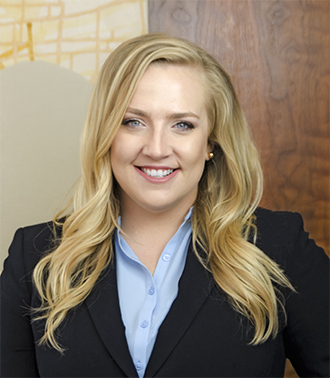Federal Circuit Overrules Rosen-Durling Standard for Design Patents
On May 21, 2024, the Court of Appeals for the Federal Circuit sitting en banc overruled the long-applied Rosen-Durling test for assessing the nonobviousness of design patents. The court held that obviousness determinations for design patents should use the same “analytical tools for reviewing the validity of a utility patent under § 103,” i.e., the Graham factors.
The underlying dispute stemmed from a petition that LKQ Corporation and Keystone Automotive Industries, Inc. (collectively, LKQ) filed with the Patent Trial and Appeal Board (the Board) to institute inter partes review of GM Global Technology LLC’s (GM) design patent covering a design for a vehicle’s front fender. LKQ’s petition argued, inter alia, that GM’s design patent was unpatentable because it was obvious under 35 U.S.C. § 103 based on U.S. Design Patent No. D773,340 (Lian) alone or as modified by a promotional brochure depicting the front fender on the 2010 Hyundai Tucson.
In the underlying proceeding, the Board applied the long-standing Rosen-Durling test (Durling v. Spectrum Furniture Co., Inc., 101 F.3d 100, 103 (Fed. Cir. 1996); In re Rosen, 673 F.2d 388, 391 (CCPA 1982)) to assess the nonobviousness of GM’s design. The two-part Rosen-Durling test first requires a single reference that has design characteristics that are “basically the same as the claimed design.” Rosen’s “basically the same” test required consideration of the visual impression created by the patented design as a whole. If such reference exists, other references may be used to modify it to create a design that has the same overall appearance as the claimed design, so long as any secondary references are “so related to the primary reference that the appearance of certain ornamental features in one would suggest the application of those features to the other.” The Board concluded, among other things, that because the primary reference LKQ relied upon was not “basically the same” as the claimed design, LKQ had failed to prove that GM’s design was obvious in view of the prior art.
On appeal, LKQ argued that the Rosen-Durling test was implicitly overruled by the Supreme Court’s decision in KSR International Co. v. Teleflex Inc., 550 U.S. 398 (2007), which rejected the rigid application of the “teaching, suggestion, or motivation” test courts had previously used to assess nonobviousness for utility patents. Specifically, LKQ argued that the Rosen-Durling requirement of a “primary reference” that discloses a design that is “basically the same” as the claimed design was inconsistent with the expansive and flexible approach established by the Supreme Court in KSR.
In a prior Federal Circuit panel, the court held that it could not overrule the Rosen-Durling test “without a clear directive from the Supreme Court.” This subsequent en banc panel, however, overruled the Rosen-Durling test in view of its conclusion that the two requirements of the Rosen-Durling test were “improperly rigid.” In other words, the court held that both steps of the Rosen-Durling imposed limitations absent from § 103’s broad and flexible standard.
In its place, the court held that the obviousness of design patents should be determined on similar factual criteria that is considered for utility patents on application of the Graham factors:
Factor 1: The court instructed that the fact finder should consider the “scope and content of the prior art” within the knowledge of an ordinary designer in the field of design. As part of this analysis, the court explained that there is no threshold similarity or “basically the same” requirement to qualify as prior art. Rather, an “analogous art” requirement applies to each reference.
For utility patents, “analogous art” applies to art that is (1) in the same field of endeavor as the claimed invention and (2) if not in the same field of the inventor’s endeavor, the reference is still reasonably pertinent to the particular problem with which the inventor is involved. The court noted that the second part of this inquiry “would not seem to apply to design patents in the same way” as utility patents because, unlike utility patents, design patents do not clearly indicate problems with which inventors are involved and do not contain written descriptions or written claims. However, the court refused to “delineate the full and precise contours” of the analogous art test for design patents, leaving this consideration to future cases to further develop the standard.
Factor 2: The court instructed that the fact finder should determine “the differences between the prior art designs and the design claim at issue” from the perspective of an ordinary designer in the field of the article of manufacture. The court explained that this approach “casts aside a threshold ‘similarity’ requirement.”
Factor 3: The court instructed that “the level of ordinary skill in the pertinent art must be resolved.” In the context of design patents, the court explained that “a person of ordinary skill in the art to which the invention pertains” is assessed from the viewpoint of an ordinary designer in the field to which the claimed design pertains. Put another way, “a designer of ordinary skill who designs articles of the type involved.”
The court went on to reaffirm its previous description of this inquiry as focusing “on the visual impression of the claimed design as a whole and not on selected individual features.” The court noted that the more different the overall appearances of the primary reference verses the secondary reference(s), “the more work a patent challenger will likely need to do to establish a motivation to alter the primary prior art design in light of the secondary one and demonstrate obviousness without the aid of hindsight.” Lastly, the court noted that the obviousness inquiry for design patents requires assessment of secondary considerations of nonobviousness when evidence of such considerations is presented.
Many expect the court’s LKQ decision to have a significant impact on obtaining and enforcing design patents. For example, many expect the court’s decision to lead to an increase in the number and variety of obviousness challenges against design patents, as well as an increase in obviousness determinations. Companies may decide to reconsider their design patent portfolio development strategies in view of a larger body of potential prior art that may be considered in patentability and validity challenges.
The future analyses to be applied by the patent office and in district courts is likely to develop under principles at the intersection of utility patent, design patent, and product configuration trade dress. Our team has extensive experience in these areas and we are closely monitoring developments following the Federal Circuit’s decision.
For more information, please contact any of the authors of this Advisory or your usual Arnold & Porter contact.




